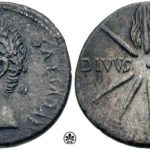
Is there a comet with a periodicy of 5000 years, due to return in 2012? Without any evidence from 3114BC it is impossible to say.
(my article in 2010)
When our very early ancestors were colonizing the Nile River Valley, 5,000 years ago at the dawn of civilization, it’s likely a brilliant comet appeared in the predawn sky. There is no direct evidence for this visitor because the start of recorded history was still a few centuries away.
The belief is that comet at least split into two pieces, which would not return to the Sun along the same orbital track until 5,000 years later. This forensic evidence can be linked to the great comet of 1844 that was nearly as bright as the brightest naked-eye star, Sirius. The second fragment, called comet ATLAS, appeared near the beginning of 2020.
NASA, 2021
My best guesses of what the ancient Mayans predicted for Dec 21, 2012, were a solar storm or a comet.
A solar storm could in theory have been predicted, from thousands of years of observation. Modern cultures have only been observing them for 150 years or so. However, knowing which direction the storm pointed – the Sun is rotating – I figure was impossible. As it happened, in 2012 a solar storm powerful enough to wipe out our electrical grids, occurred. Thankfully it was not directed at Earth, but it was quite rare.
Comets were always the better candidate:
- Visible to the naked eye if big enough and close enough
- The return can be calculated
- Scary enough to form a religion around
To find the comet, my only option was to look at historical records. And they don’t go back to 3113 BC, the start of the ancient Mayan calendar. Clearly a comet spotted then, with a 5,000 year orbit, would be the best candidate, bookending the calendar. But such a period of orbit could only be back-calculated if observed in modern times.
Instead, I found a comet that could fit the 5 “ages” within the calendar – Caesar’s Comet:
The Long Count calendar was 5125 years long, which divided by 5 is 1025 years. 2050 years before 2012 was 39BC and in 44BC was Caesar’s Comet – It was perhaps the most famous comet of antiquity.
Accuracy, strangely, is not so important. Because travelling past the planets can cause gravitational disturbances, even NASA and their computers aren’t very accurate.
When Comet Hyakutake was discovered in 1996, astronomers determined that on the way in to our solar system it had an estimated periodicy of 17,000 years, yet after having its orbit disturbed by the largest planets, its new course meant it would take between 72,000 and 114,000 years to return.
When 23P/Brorsen-Metcalf was first discovered it was closest to Earth in August 1847. After completing its orbit it was back in that approximate spot in October 1919, and again in August 1989. The two observed periods were 72 years and 70 years. That’s roughly a 3% deviation between 2 orbits.
My bet is still with Comet Caesar. Not only could it still return soon and still be a remarkably accurate prediction…
…it might have zipped past us in 2012. Each time a comet grazes the sun, ice is burned off (that is literally what we see). After enough orbits, there is no ice left, and we cannot see it. They become a dark comet and some experts believe that half of the comets passing close by us are dark. We could literally be the path of one and not know until a few days before impact.
